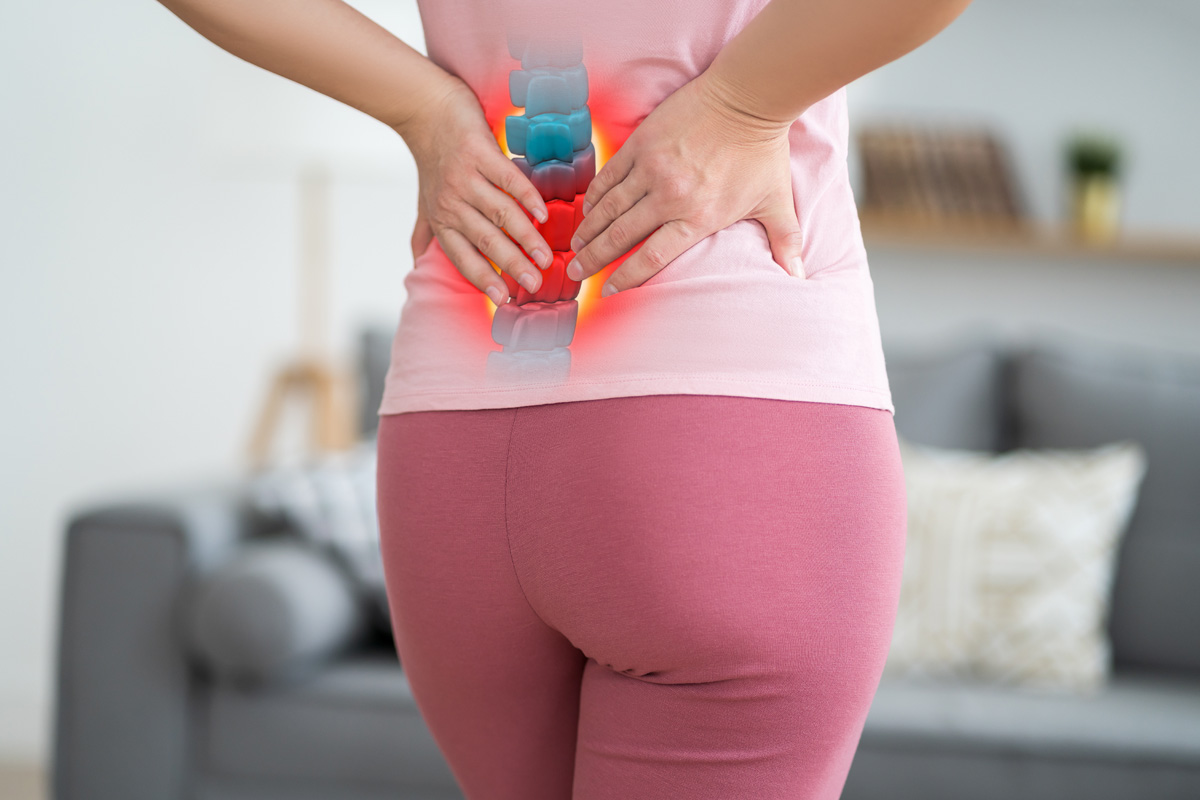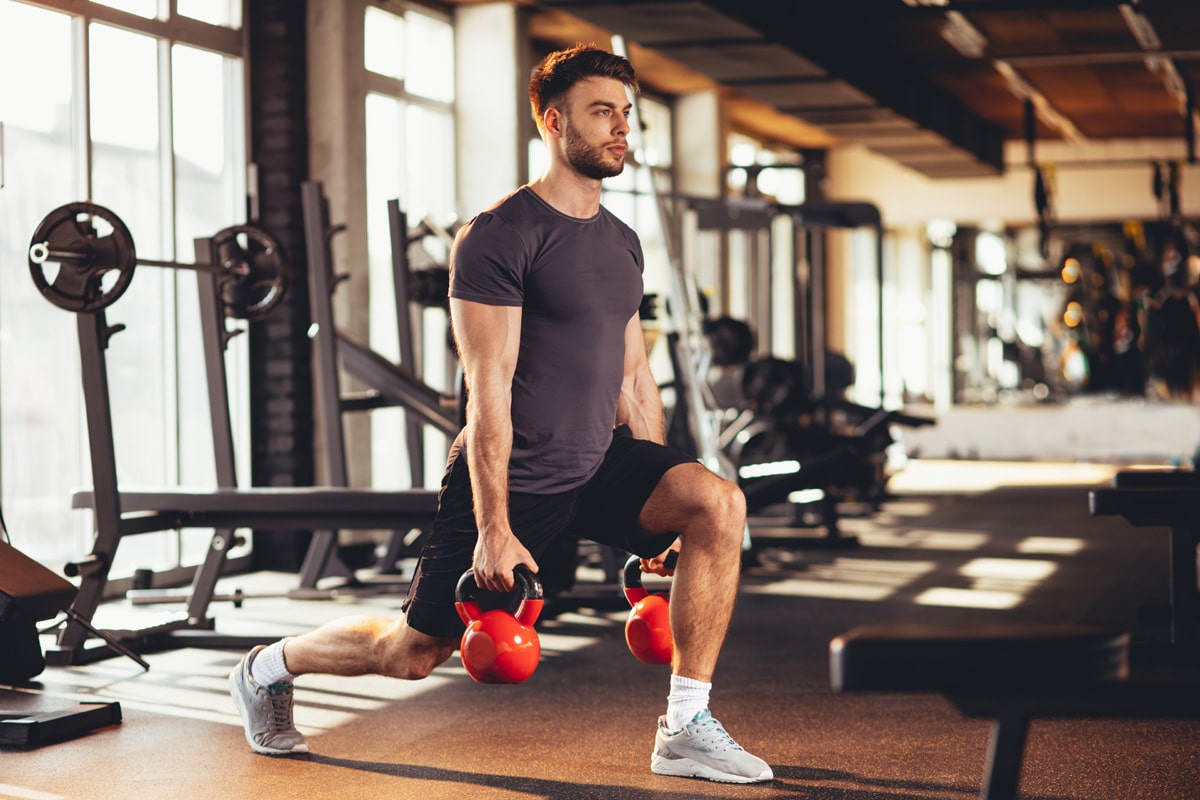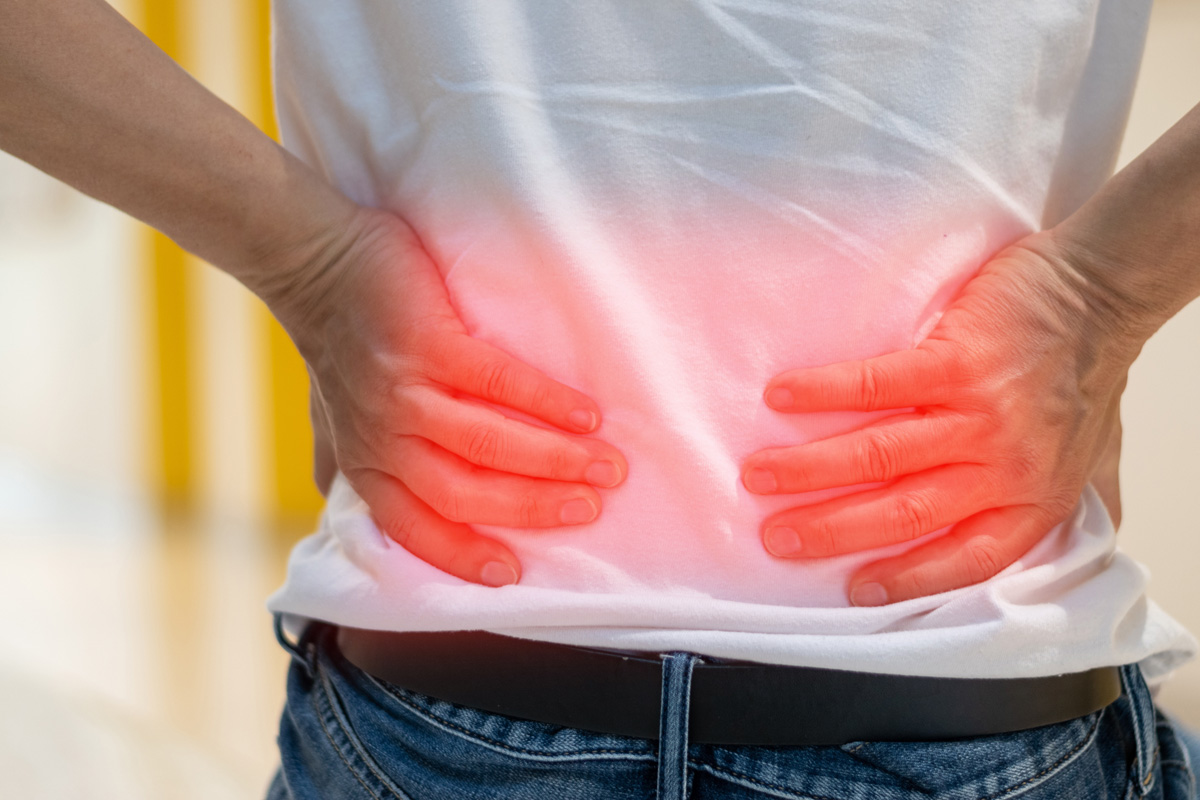Lower back pain, a common yet complex condition, affects a significant percentage of the global population at least once in their lifetime. This discomfort, often linked to physical factors such as muscle strain or poor posture, can also be exacerbated by psychological stressors. The intricacies of the lumbar region and the common triggers of lower back pain will be explored, leading us to discuss various therapeutic approaches that encompass both physical interventions and surgical remedies. The discussion will also underscore the importance of preventive measures and lifestyle modifications in managing this condition effectively.
Understanding Lower Back Pain
Frequently experienced by millions worldwide, lower back pain is an intricate condition that requires a thorough understanding of its causes, symptoms, and treatment strategies. This complex ailment intertwines both physical and psychological factors, with the latter often undervalued. The psychological impact of chronic lower back pain can be substantial, leading to depressive symptoms, anxiety, and decreased quality of life, forming a vicious cycle of pain and emotional distress.
Identifying and addressing these psychological factors is essential in managing and treating lower back pain. Conventional methods such as medication and physiotherapy are commonly employed, but the value of alternative therapies should not be dismissed. Complementary approaches like mindfulness, yoga, and acupuncture have shown potential in alleviating both the physical discomfort and psychological distress associated with lower back pain.
Moreover, a multimodal approach, integrating conventional and alternative therapies, can provide a thorough and holistic strategy. This approach not only targets the physical symptoms but also addresses the psychological aspects, enhancing overall well-being and potentially breaking the cycle of chronic pain. Understanding the psychological impact and the role of alternative therapies is vital in the holistic management of lower back pain.
Anatomy of the Lower Back
Having comprehended the psychological aspects of lower back pain and the role of alternative therapies, it is equally significant to gain an understanding of the anatomical structure of the lower back to grasp the origins of this widespread condition. The lower back, specifically referred to as the lumbar region, consists of five vertebrae denoted as L1 to L5. These lumbar vertebrae bear the weight of the upper body and provide mobility for everyday motions such as twisting and bending.
The Lumbar Vertebrae Function is vital in preserving the structural integrity of the spine, facilitating movement, and protecting the spinal cord. Interlaced between these vertebrae are intervertebral discs, which act as shock absorbers, preventing the vertebrae from grinding against each other.
Spinal Disc Health is key in maintaining a pain-free lower back. These discs, composed of a tough outer layer and a gel-like inner core, can deteriorate or become damaged, leading to conditions such as herniated or slipped discs, a common cause of lower back pain. Understanding these anatomical aspects is fundamental to identifying the etiology of lower back pain and in formulating effective treatment approaches.
Common Causes of Lower Back Pain
What are the common causes that culminate into the widely prevalent issue of lower back pain? The answer is multifaceted, encompassing a range of physical and psychological factors.
Physically, issues such as muscle or ligament strain, bulging or ruptured disks, and skeletal irregularities can lead to lower back pain. Repeated heavy lifting, sudden awkward movements, or chronic poor posture often exacerbate these conditions.
The psychological impacts of stress and anxiety can also manifest as lower back pain. Tense muscles due to psychological distress can lead to discomfort and pain in the lower back region. This often creates a vicious cycle where pain increases stress and anxiety levels, which in turn intensifies the physical pain.
Just as the causes are varied, so are the potential treatments. Alternative therapies, such as chiropractic treatments, acupuncture, yoga, and massage, can provide relief for some individuals. These treatments aim to alleviate pain by addressing both physical conditions and the psychological impacts that may be contributing to the pain.
Recognizing Lower Back Pain Symptoms
Understanding the symptoms associated with lower back pain is a key step in seeking an accurate diagnosis and effective treatment. These symptoms can manifest in a variety of ways, from sharp, debilitating pain to a dull, constant ache.
The nature of the pain can often be linked to specific pain triggers. For instance, the pain may worsen with physical activity, prolonged periods of standing or sitting, or certain movements like bending or lifting. Alternatively, it may be more severe in the morning or at night. Identifying these triggers can help in managing the symptoms and in planning an appropriate treatment strategy.
In addition to physical discomfort, lower back pain can also have a significant emotional impact. Chronic lower back pain can lead to feelings of frustration, anxiety, depression, and other psychological issues. This emotional toll can, in turn, exacerbate the physical pain, creating a vicious cycle that can be challenging to break.

Diagnosing Lower Back Conditions
The process of diagnosing lower back conditions is multifaceted, encompassing several critical steps including symptom identification, medical imaging, and physical examination. A thorough understanding of common symptoms aids in initial detection and guides subsequent diagnostic procedures. Medical imaging and physical examinations then provide in-depth analysis of the condition, revealing valuable information about its severity, causes, and appropriate treatment strategies.
Identifying Common Symptoms
In the domain of lower back conditions, recognizing common symptoms plays a fundamental role as a first step towards accurate diagnosis and effective treatment. These symptoms can range from mild discomfort to severe pain, and may also include stiffness, muscle spasms, or an inability to stand straight. Often, these physical symptoms are accompanied by psychological impacts such as stress, anxiety, and depression.
Furthermore, the patient’s medical history, lifestyle factors, and response to previous treatments are vital in evaluating the severity and nature of the problem. For some, alternative therapies such as acupuncture, chiropractic adjustments, or yoga may provide relief. However, it’s essential to mention that these therapies should be considered complementary to, not a replacement for, medical advice and treatment.
Role of Medical Imaging
When it comes to diagnosing lower back conditions, medical imaging techniques play an indispensable role, providing detailed insights into the underlying causes of the patient’s discomfort. Techniques such as MRI, CT, and X-Ray scans have revolutionized the field of radiology, allowing for precise identification of structural abnormalities, tumors, or degenerative conditions. However, imaging limitations exist. The clarity of images can be affected by patient movement or metallic implants, and these techniques might not always reveal the exact source of pain. Despite these limitations, advancements in radiology continue to improve diagnostic accuracy, enhancing the capability to detect and evaluate lower back conditions, and paving the way for targeted treatment strategies.
Importance of Physical Examination
Beyond the scope of imaging techniques, a thorough physical examination constitutes an essential part of diagnosing lower back conditions, offering a hands-on approach to identify potential sources of pain and discomfort. This process involves a detailed postural assessment, wherein the clinician evaluates the patient’s stance, alignment, and movement patterns. It is during this assessment that deviations, imbalances, and physical limitations can be noted, which might contribute to the patient’s lower back pain. Additionally, patient communication plays an important role in the physical examination as well. A clear, open dialogue allows patients to articulate their symptoms accurately, ensuring a more in-depth understanding of the condition. Hence, the physical examination is a critical step in the diagnostic process, balancing technology with hands-on evaluation and communication.
Over-the-Counter Remedies for Relief
Often, individuals suffering from lower back pain seek initial relief from over-the-counter medications, which offer a convenient and immediate solution to their discomfort. Remarkably, these remedies can be effective for short-term pain management, but it’s important to remember that they are not long-term solutions and should be used in conjunction with natural remedies and lifestyle modifications.
Most commonly used over-the-counter remedies for lower back pain include:
- Non-steroidal anti-inflammatory drugs (NSAIDs): These reduce inflammation and pain. Ibuprofen and naproxen are most frequently used.
- Acetaminophen (Paracetamol): This can relieve pain by altering the way your body perceives it.
- Topical creams and patches: These may contain ingredients like capsaicin or menthol, which can numb the area and provide relief.
While these medications can provide immediate relief, they should not be the sole method of pain management. Natural remedies such as regular exercise, proper posture, and maintaining a healthy weight can assist in managing and preventing lower back pain. It’s also essential to consult a healthcare provider before starting any new medication regimen, as overuse or misuse of these medications can lead to adverse effects.
Physical Therapy Techniques
While over-the-counter medication can offer immediate relief, the benefits of physical therapy techniques in managing lower back pain are indisputable, providing a more all-encompassing and holistic approach. Techniques such as pelvic alignment and hydrotherapy have proven to be particularly effective.
Pelvic alignment is a key focus in physical therapy for lower back pain. Misalignment of the pelvis can contribute to lower back pain by creating an imbalance in the body’s structural integrity. The correction of this alignment through specific exercises and stretches can greatly alleviate pain. These exercises target the muscles surrounding the pelvis and lower back, strengthening them to support proper alignment.
Hydrotherapy benefits in treating lower back pain should not be ignored. Immersing the body in warm water reduces the force of gravity that compresses the joints, providing immediate pain relief. The warmth stimulates blood flow to stiff muscles and frozen joints, making it easier for them to move. Hydrotherapy also aids in the production of endorphins, the body’s natural painkillers, providing not just immediate relief but long-term management of lower back pain.
Physical therapy techniques provide a thorough approach to managing lower back pain, identifying and addressing the root cause of the problem.

Benefits of Regular Exercise
Regular exercise can serve as a potent intervention for lower back pain, offering both immediate and long-term benefits. Incorporating consistent physical activity into one’s routine has been shown to not only reduce pain, but also strengthen the lower back, enhancing overall functionality and resilience. This discussion will explore the specific advantages of regular exercise in mitigating lower back pain and improving quality of life.
Exercise Reduces Pain
Engaging in regular physical activity can greatly alleviate lower back pain, underscoring the importance of consistent exercise in maintaining musculoskeletal health. Exercise, when appropriately executed using proper exercise equipment, can modulate pain perceptions, providing relief from chronic discomfort. This is achieved through several physiological mechanisms:
- Endorphin Release: Exercise stimulates the production of endorphins, brain chemicals that act as natural painkillers.
- Improved Blood Flow: Regular physical activity enhances circulation, delivering essential nutrients to the spinal structure.
- Stress Reduction: Regular exercise aids in reducing stress levels, a common contributor to back pain.
Hence, the role of exercise in pain management is crucial, and implementing a consistent regimen can greatly improve the quality of life for those suffering from lower back pain.
Strengthening Lower Back
Incorporating a targeted exercise regimen specifically designed to strengthen the lower back can yield remarkable benefits, enhancing muscular strength and flexibility, thereby reducing susceptibility to injury and chronic discomfort. Such a program, rooted in both aerobic and strength training, also facilitates posture correction, an essential element in alleviating lower back pain. By maintaining an upright and balanced stance, the resultant strain on the lumbar region diminishes, fostering improved spinal alignment and overall bodily function. Additionally, regular exercise positively impacts mental health, mitigating stress and anxiety which often exacerbate physical pain. Hence, a thorough approach to strengthening the lower back that integrates physical exercise and posture correction, while considering the mental health impact, is highly advantageous.
Surgical Treatment Options
Exploring surgical treatment options can be an effective approach when conservative measures fail to alleviate lower back pain. The decision to undergo surgery should be considered carefully, taking into account the patient’s overall health, the severity of the pain, and the impact on their quality of life.
Options for surgical intervention often include traditional methods such as spinal fusion, but alternatives are increasingly being explored due to potential benefits such as reduced recovery time and less post-operative pain.
- Artificial disc replacement (ADR): This spinal fusion alternative involves replacing the damaged disc with an artificial one, preserving motion in the spine.
- Laminectomy: In this procedure, part of the vertebrae is removed to relieve pressure on the spinal cord or nerves.
- Microdiscectomy: This minimally invasive surgery removes parts of the disc that are pressing on a nerve.
Post surgery rehabilitation is vital for a successful recovery. It typically involves physical therapy exercises to strengthen the back and improve flexibility, pain management strategies, and lifestyle modifications. Remember, surgery is not a quick fix but a part of a thorough treatment plan. It should be considered when other treatments have not provided sufficient relief.
Prevention and Lifestyle Changes
The management of lower back pain extends beyond medical interventions to include a series of preventive measures and lifestyle modifications. The benefits of daily exercise, the significance of an ergonomic workspace, and the role of a balanced diet in maintaining a healthy back form the cornerstone of these measures. In the following discussion, we will analyze these three aspects in detail, highlighting their importance in preventing lower back pain.
Daily Exercise Benefits
Embracing a regimen of daily exercise can serve as a powerful weapon in preventing and mitigating lower back pain, fostering significant improvements in overall health and lifestyle. Regular physical activity not only strengthens the muscles that support the spine but also enhances emotional wellness by reducing stress and anxiety, common triggers of back pain. Furthermore, the correct use of exercise equipment can amplify these benefits and contribute to a healthier lifestyle.
The following points highlight some of the benefits:
- Daily exercise, especially strength training, can improve posture and flexibility, reducing the likelihood of back strain.
- Consistent use of exercise equipment, such as resistance bands or stability balls, can target core muscles, enhancing spinal support.
- Regular physical activity promotes emotional wellness by triggering endorphin release, which acts as a natural painkiller and mood elevator.
Ergonomic Workspace Importance
Often overlooked, an ergonomically designed workspace plays a pivotal role in preventing lower back pain and promoting overall health. It is designed to alleviate workplace stress, which if not addressed, can contribute greatly to musculoskeletal disorders like lower back pain. The arrangement and design of the workspace, including the desk, chair, and computer, should promote a healthy sitting posture and natural alignment of the body. An improper sitting posture, such as slouching or hunching over, can strain the lower back and lead to pain. Hence, investing in an ergonomically designed workspace is a preventative measure that can mitigate the risk of developing lower back pain. It is an integral part of a holistic approach to health and wellness in the workplace.
Balanced Diet Role
Certainly, a balanced diet plays an important role in both the prevention of lower back pain and the promotion of overall health through essential lifestyle modifications. A diet rich in anti-inflammatory foods can help to reduce dietary inflammation, a common cause of lower back pain. Nutrient supplementation, such as vitamins D and B12, calcium, and magnesium, can also greatly contribute to bone health and muscle function, thereby reducing the risk of back pain.
- Anti-inflammatory foods: These include fruits, vegetables, nuts, fish, and olive oil.
- Nutrient supplementation: Vitamins D and B12, calcium, and magnesium are essential for bone health and muscle function.
- Hydration: Adequate water intake is important for the health of intervertebral discs and overall spinal health.
Coping With Chronic Lower Back Pain
Managing chronic lower back pain requires a multifaceted approach that includes not only medical interventions, but also lifestyle modifications and psychological support. The mental health impact of chronic lower back pain cannot be understated. Prolonged pain can lead to frustration, anxiety, and depression, further exacerbating the physical discomfort. Integrating mental health support into a treatment strategy is crucial.
Alternative therapies can also play a vital role in managing chronic lower back pain. Modalities such as yoga, acupuncture, and massage therapy have been shown to provide relief and improve quality of life. These therapies can help reduce the dependence on painkillers and enhance the overall effectiveness of the treatment plan.
Moreover, certain lifestyle modifications such as regular exercise, maintaining a healthy weight, and adopting an ergonomically correct posture can notably reduce the intensity of pain. It is important to note that each individual is unique, and what works for one may not work for another. Therefore, treatment plans should be personalized, keeping in mind the patient’s specific circumstances and preferences.
Frequently Asked Questions
What Role Does Genetics Play in Lower Back Pain Susceptibility?
Genetic testing has indicated a significant role of hereditary factors in susceptibility to certain conditions. Research suggests that specific genes might predispose individuals to experience these conditions, highlighting the importance of genetic influence.
Can Lower Back Pain Be a Sign of Serious Underlying Conditions Like Cancer?
Yes, persistent lower back pain can potentially indicate serious conditions like cancer. However, it’s often related to benign lower back injuries. Pain management techniques are essential while awaiting a definitive diagnosis.
Is It Safe to Practice Yoga or Pilates With Lower Back Pain?
Practicing yoga or pilates can be part of effective pain management techniques. However, it’s crucial to maintain proper form and therapeutic stretching to avoid injury. Always consult a healthcare professional before starting a new regimen.
Does Stress or Anxiety Contribute to Lower Back Pain?
Yes, stress and anxiety can contribute to physical discomfort. They can lead to muscle tension and anxiety-induced posture changes, potentially causing pain. Stress management techniques may help in reducing this discomfort and improving overall wellness.
Are There Any Specific Diets Recommended for Managing Lower Back Pain?
While no specific diet is universally recommended for pain management techniques, a balanced diet rich in anti-inflammatory foods, such as fruits, vegetables, and lean proteins, can support overall wellness and potentially mitigate discomfort.

